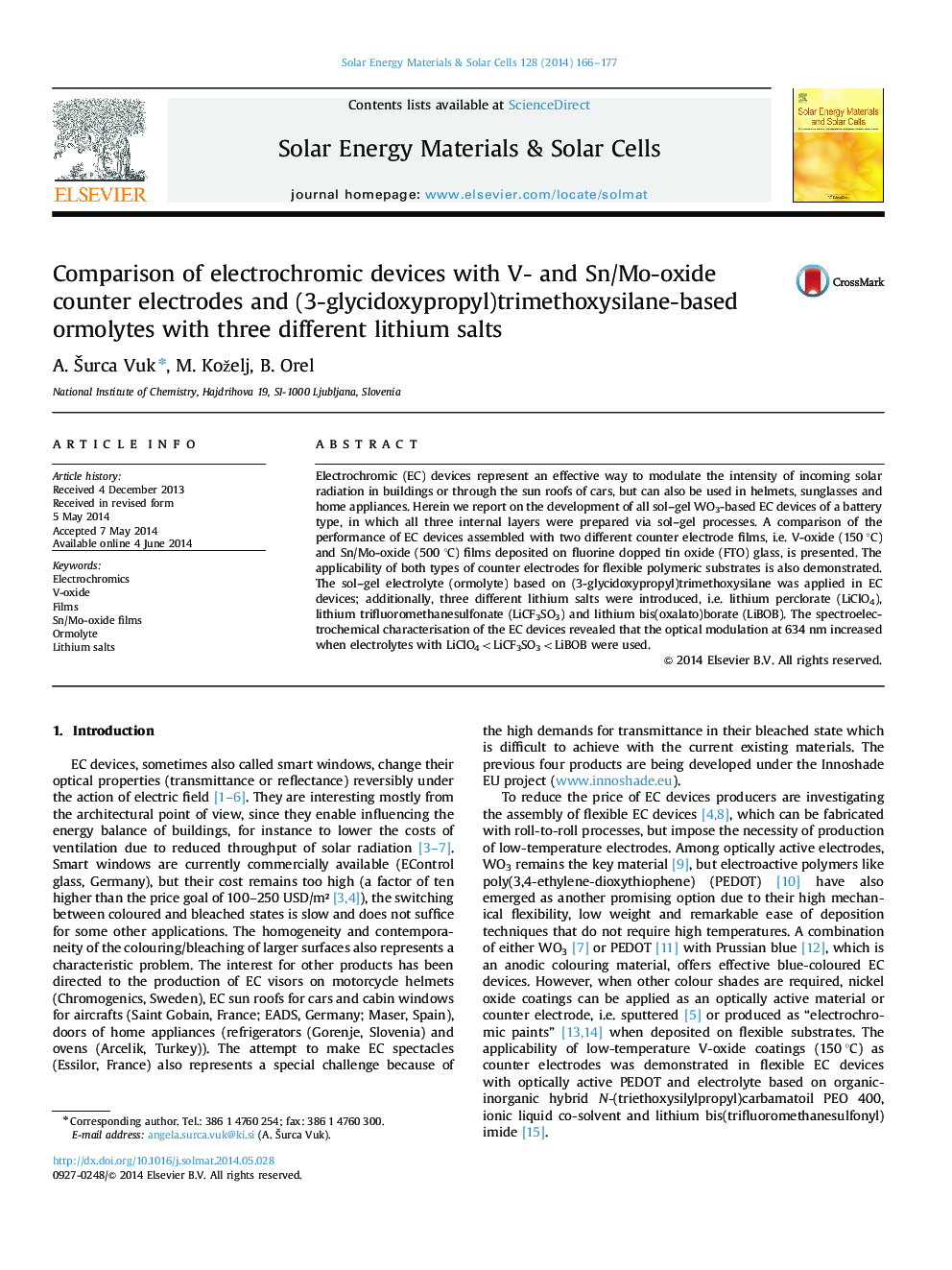| Article ID | Journal | Published Year | Pages | File Type |
|---|---|---|---|---|
| 77982 | Solar Energy Materials and Solar Cells | 2014 | 12 Pages |
•All sol–gel WO3-based EC devices with V-oxide or Sn/Mo-oxide counter electrode.•Both counter electrodes are also applicable for flexible substrates at 150 °C.•Comparison of EC devices with ormolytes with different lithium salts.•Optical modulation at 634 nm increased for LiClO4 Electrochromic (EC) devices represent an effective way to modulate the intensity of incoming solar radiation in buildings or through the sun roofs of cars, but can also be used in helmets, sunglasses and home appliances. Herein we report on the development of all sol–gel WO3-based EC devices of a battery type, in which all three internal layers were prepared via sol–gel processes. A comparison of the performance of EC devices assembled with two different counter electrode films, i.e. V-oxide (150 °C) and Sn/Mo-oxide (500 °C) films deposited on fluorine dopped tin oxide (FTO) glass, is presented. The applicability of both types of counter electrodes for flexible polymeric substrates is also demonstrated. The sol–gel electrolyte (ormolyte) based on (3-glycidoxypropyl)trimethoxysilane was applied in EC devices; additionally, three different lithium salts were introduced, i.e. lithium perclorate (LiClO4), lithium trifluoromethanesulfonate (LiCF3SO3) and lithium bis(oxalato)borate (LiBOB). The spectroelectrochemical characterisation of the EC devices revealed that the optical modulation at 634 nm increased when electrolytes with LiClO4
